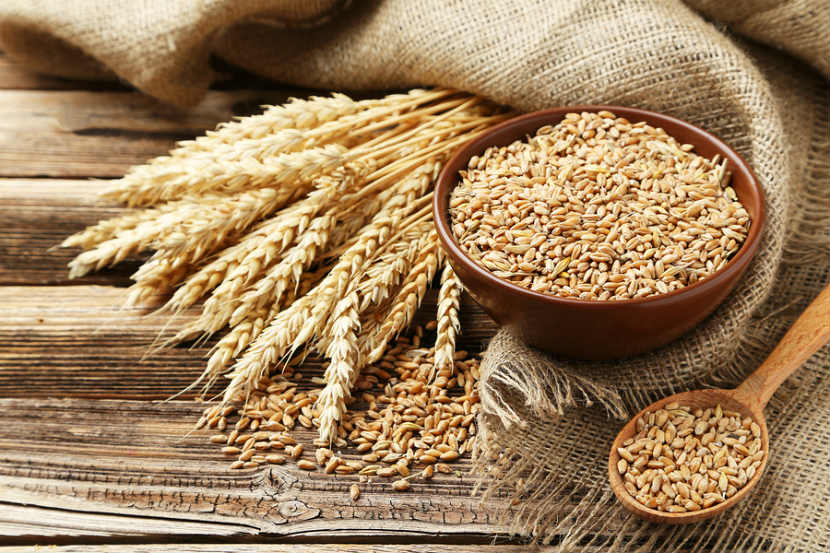
A wheat allergy is a reaction that involves your body’s immune system. When you have a wheat allergy your immune system thinks that the wheat proteins are harmful and triggers different symptoms.
Wheat is one of the nine most common food allergens in Canada. The other eight are: peanuts, tree nuts (such as almonds, Brazil nuts, cashews, hazelnuts, macadamia nuts, pecans, pine nuts, pistachio nuts, and walnuts), sesame seeds, milk, eggs, seafood, soy, and sulphites (a food additive).
What are the symptoms of a wheat allergy?
Symptoms of a wheat allergy include:
-
Flushed face, hives or a rash
-
Red and itchy skin
-
Swelling of the eyes, face, lips, throat or tongue
-
Trouble breathing, speaking or swallowing
-
Anxiety, distress, faintness, paleness, weakness, sense of fear or doom
-
Cramps, diarrhea, vomiting
-
A drop in blood pressure, rapid heartbeat, unconsciousness
Wheat doesn’t usually cause anaphylaxis (which is a serious food allergy reaction that can be life-threatening). But any serious allergic reaction to wheat should be checked with your doctor.
Is a wheat allergy the same as celiac disease?
No. In a wheat allergy, a person`s immune system is reacting to the proteins found in wheat. A wheat allergy does not cause any permanent damage to the intestines.
In celiac disease, a specific protein called gluten actually damages the small intestine. This makes the body less able to absorb many important nutrients. Gluten is found in wheat and also other grains, such as rye, triticale and barley. The symptoms of celiac disease include: chronic diarrhea, weight loss, cramps, bloating, fatigue and anemia.
Check with your doctor or allergist if you are not sure whether you have a wheat allergy or celiac disease.
Do you have a list of foods that contain or may contain wheat?
The safest way to avoid a wheat related reaction is to avoid all food and products that contain or may contain wheat. Stricter Canadian guidelines require that wheat-containing products are clearly labelled. The ingredient list will say “contains: wheat” if it contains this ingredient.
Click here for a list of foods that may contain wheat.
If you’re not sure if a food may contain wheat, always call the food manufacturer.
And remember, products are always changing. This means that some of your favourite foods that used to be wheat free may not be the next time you purchase them. Always read the ingredients list to be safe.
To sign up for free email notifications, or call1-800-442-2342/TTY 1-800-465-7735 (8:00 a.m. to 8:00 p.m. Eastern time, Monday to Friday) or visit Food Recalls and Allergy Alerts.
Tips for eating without wheat
-
Bake with non-wheat flours such as amaranth, arrowroot, buckwheat, rice, bean, and soy flours.
-
Cook pasta made from buckwheat, rice, kasha, millet or potato.
-
Snack on plain baked corn chips, rice cakes, rice crackers or oat pretzels. The flavoured versions of these foods may contain wheat.
-
Switch to a breakfast cereal such as oatmeal, puffed rice, corn flakes, puffed millet, puffed amaranth or rice bran.
-
Enjoy plain, fresh or frozen vegetables, fruit, meat, and meat alternatives. The more a food is processed, the greater the chance that wheat may be used.
-
Try recipes from gluten free cookbooks available from the Canadian Celiac Association or 1-800-363-7296. Gluten free recipes contain no wheat, rye, oats or barley, so they include more restrictions than needed if you are following a wheat-free diet. But these cookbooks may still have some wonderful recipes ideas for you and your family.
-
Check out the Specialty Food Shop for wheat-free and gluten-free products that are available online or by mail order.
For more information
Wheat – One of the nine most common food allergens
Food Allergies & Intolerances
Allergy/Asthma Information Association
Food Allergy Canada
Last Update – August 16, 2018